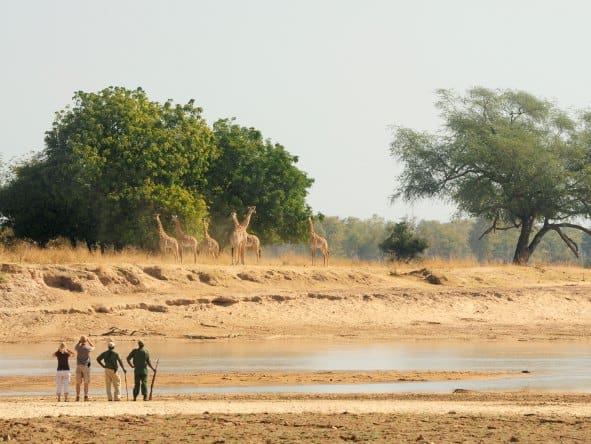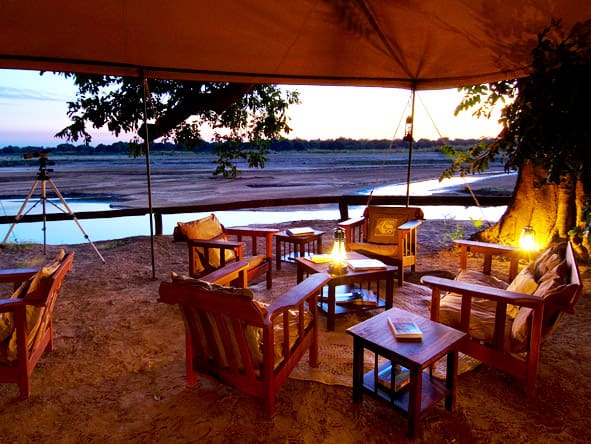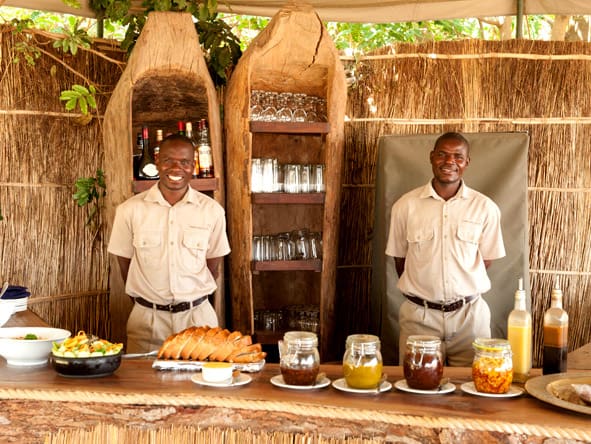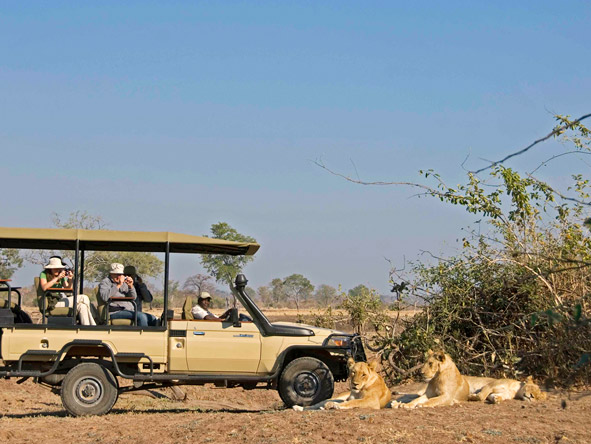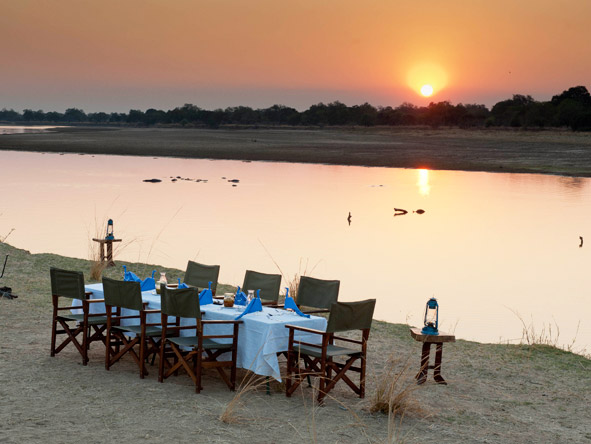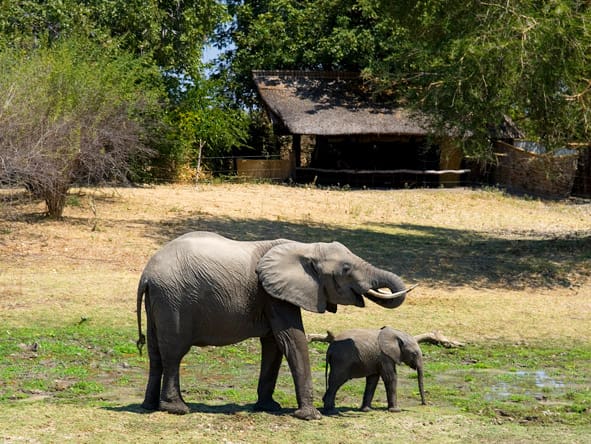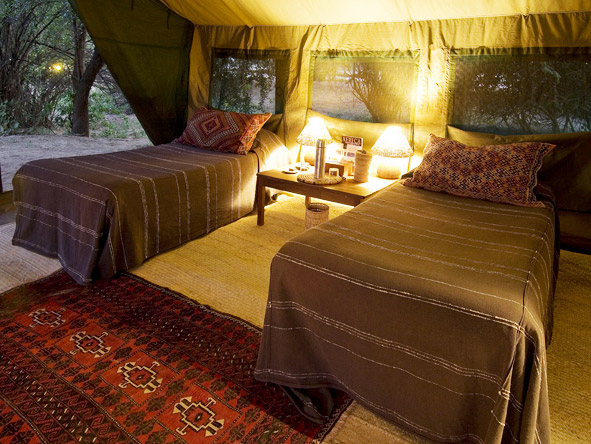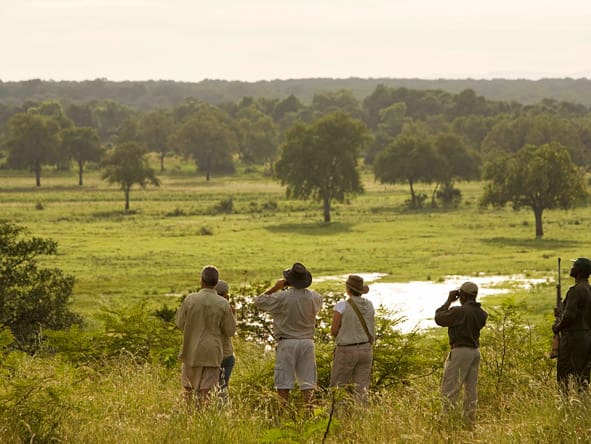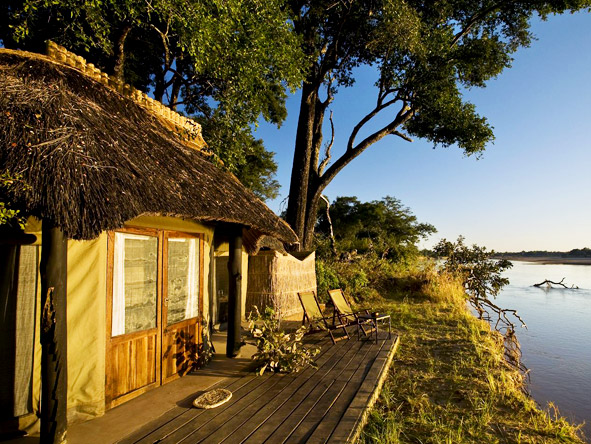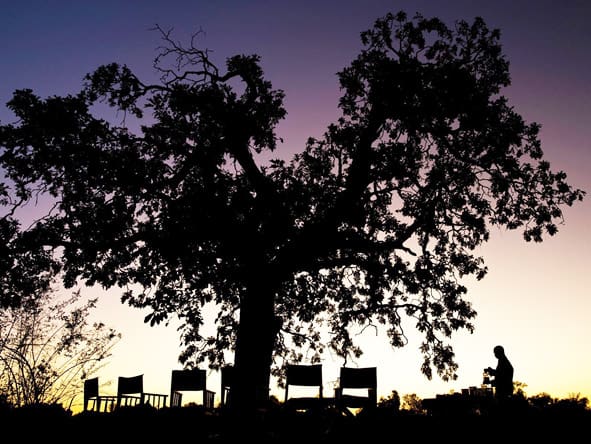Why Go to South Luangwa?
The Birthplace of the Walking Safari
Wild, remote, and packed with big game, South Luangwa is undoubtedly Zambia’s premier wildlife destination. In addition to several endemic species, the area is also home to four of the Big 5 and known as the ‘Valley of the Leopard’ due to the sheer number of the spotted big cats. South Luangwa is also known to be the birthplace of the walking safari thanks to one of its founders, British Conservationist, Norman Carr. In addition to his work with local chiefs, Carr was instrumental in initiating a visionary conservation concept, which extended to his establishment of the Rhino Trust.
Luxurious camps and lodges are spread along the banks of the meandering Luangwa River, but much of it remains unexplored and distinctly wild, making it the perfect place for an authentic, off-the-beaten-track experience. For those who wish to embrace Africa’s wild heart, uncover unique landscapes, and endemic species, South Luangwa is the perfect place to lace up your boots and explore.
Here are our top five reasons you should travel to South Luangwa:
1. Walking in the Wild
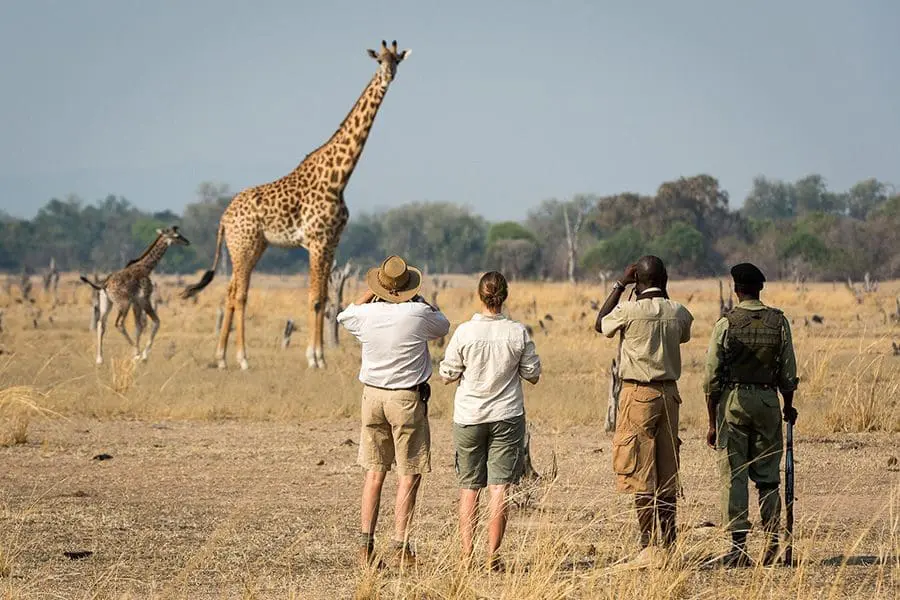
Stepping foot into the unknown can be daunting, especially when it’s into the African bush. Fortunately, you won’t be doing it alone. South Luangwa is lauded for its for its incredible guides, many of whom grew up in the area and have decades of experience and knowledge under their belts. Since their inception by Norman Carr in 1950, South Luangwa National Park remains one of only a few places in Africa where walking safaris are offered.
As no two walking safaris will ever be the same, it truly is a once-in-a-lifetime experience. Traverse the same land as nature’s giants while birds, beetles, and surrounding wildlife provides a symphony of sound. While there are always plenty of animals to see, often the most exciting parts of a walking safari are the smaller details guides will point out – tracks embedded in the sand, unique flora, and even herd patterns.
A South Luangwa National Park walking safari can vary from a leisurely stroll spanning a few hours to several days spent hiking from camp to camp. Multi-day walking safaris not only offer a variety of sightings and experiences, but also the chance to learn cultural details and share stories with guides and fellow walkers by a crackling fire.
2. A Twitcher’s Paradise
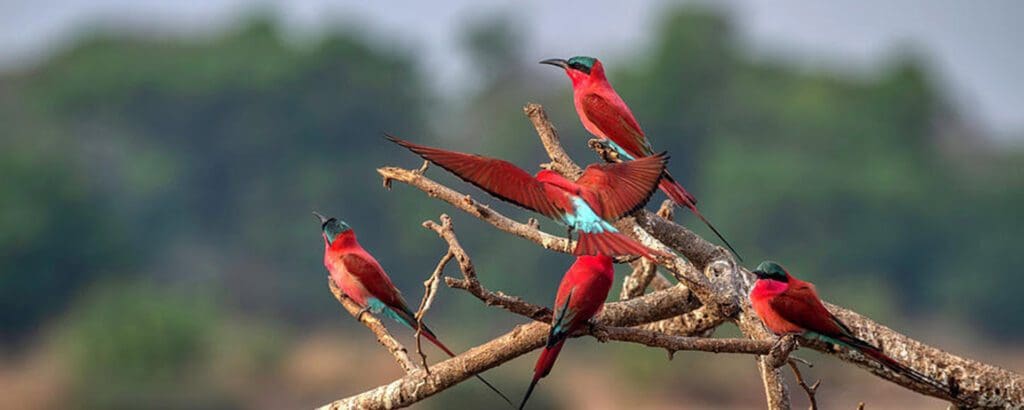
In addition to an impressive array of wildlife, the birds of South Luangwa National Park are also something to write home about. With more than 400 recorded species and a great variety of dry-country and water-based birds, the park is an enticing place for aviary enthusiasts. In addition to its common residents, such as the Grey crowned crane, Lilian’s lovebird, White-browed sparrow weaver, and Saddle-billed stork, and Kingfishers, the park also plays host to migratory species such as Southern Carmine bee-eater colonies, which arrive between August and September.
For twitcher’s, the best time to visit South Luangwa National Park depends on what makes the ‘must-see’ list – the Green Season, November to April, is arguably best as migrant species have settled in and adopted their breeding plumage. The surrounding lush landscapes make for an exquisite backdrop for in-person viewing as well as for any avid photographers. The plains and marshes of the northern Nsefu Sector of the park is home to huge colonies of yellow-billed storks, which are a particularly impressive sight during breeding season in April.
3. Sensational Wildlife
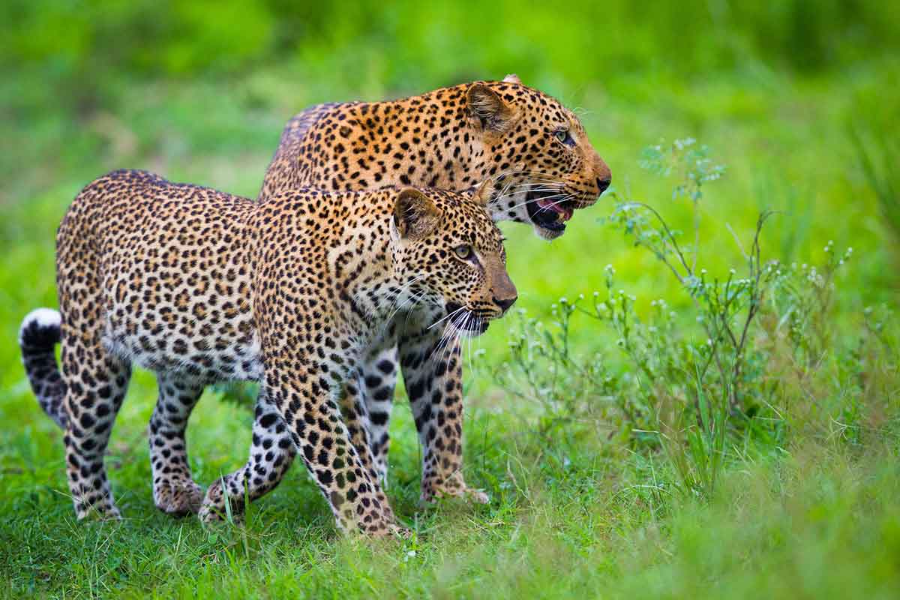
A South Luangwa safari is an always an option, thanks to year-round water levels. In other destinations, Green Season (November – April) can mean less sightings but here it simply means even less people, a greater chance of seeing shy animals, and the chance to see newly born additions to the ecosystem. Not only is the park home to a sensational variety of wildlife, but also several endemic species such as Cookson’s wildebeest, Crawshay’s zebra, and Thornicroft’s giraffe.
The list of South Luangwa National Park wildlife is extensive, so a few notable mentions in terms of predators are lion, spotted hyena, and incredibly healthy numbers of wild dogs. South Luangwa National Park has a reputation for fantastic leopard sightings as it’s one of the few parks that allow spotlit night drives, which catch these nocturnal hunters on the prowl. Four of the Big 5, minus the mighty Rhinos, can be found in South Luangwa, in addition to buck, crocodiles, and one of Africa’s biggest hippo populations. Elephants are in no short supply here and make for particularly impressive sightings when on a walking safari – their sheer scale in person compared to photographs is enough to make a lasting impression!
4. Positive Impact Travel
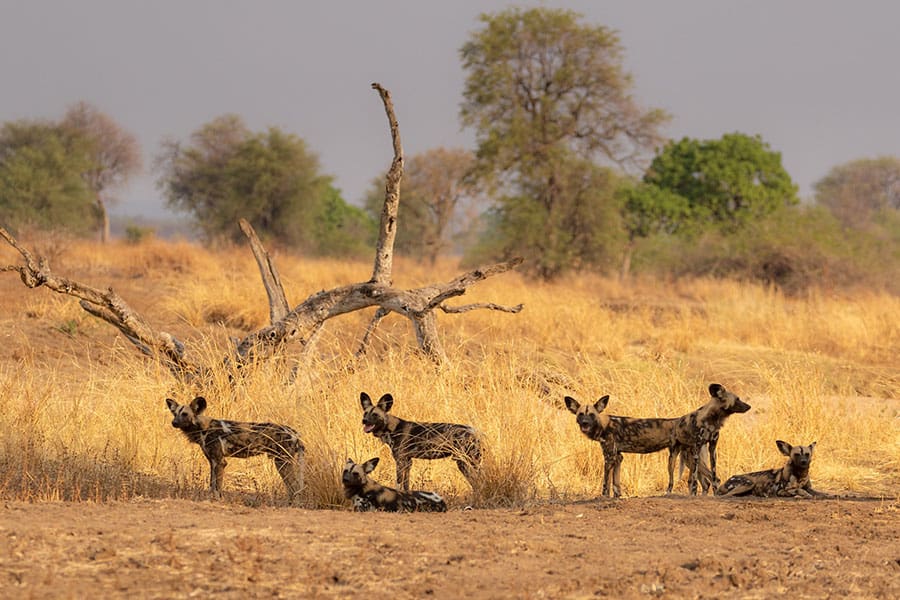
Positive Impact safaris have become even more prevalent in recent years thanks to an increasing focus on conservation. These efforts are supported through various veins, one of which is staying at lodges or camps that donate part of each guest’s stay to meaningful causes.
Go2Africa has an ongoing project with Maunga Primary School in nearby Livingstone to ensure access to quality education. To achieve this, G2A pledged to donate $30 to the school via the African Bush Camps Foundation for every trip booked at one of several selected Zambian camps and lodges. Consider a visit in combination with a day trip to Victoria Falls.
Various other partners work to ensure the continued conservation of the area and its communities, including The Bushcamp Company who are committed to anti-poaching and anti-snaring activities, and tree planting initiatives.
5. Accommodation for Every Traveller
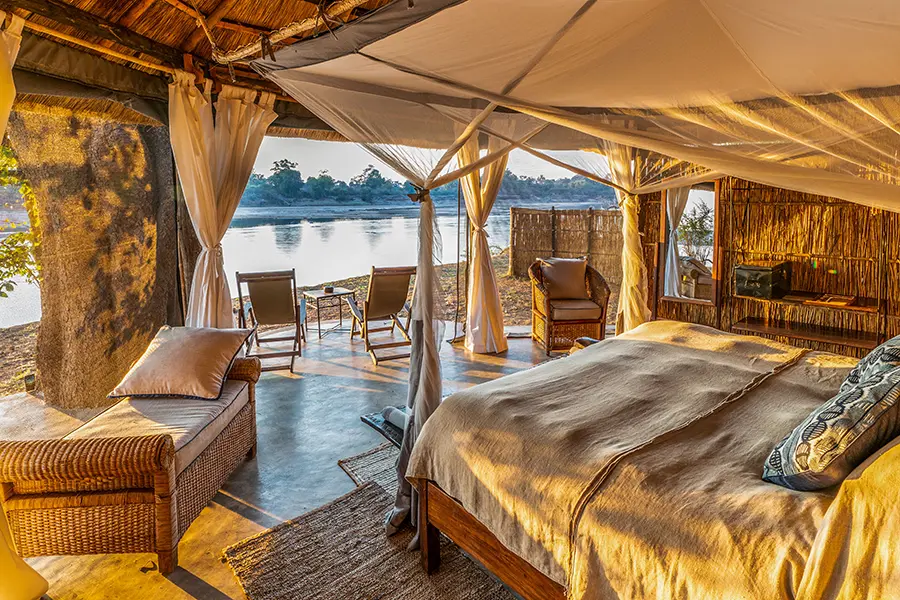
Whether dipping a toe into the safari experience or going headfirst for an incredible immersive experience for the adventurous at heart, there is somewhere in South Luangwa to call home. From sleek, sophisticated lodges to proper bush camps complete with bucket showers, where to stay depends entirely on what you want. Don’t be scared off by the term ‘tented camp’, as they often offer comfortable accommodation and some of the best scenery.
While the park is never heavily populated, the camps in the remote southern section are spaced a considerable distance from one another, meaning the chance of seeing other game vehicles is even more unlikely. There are also some sensational mobile and fly-camp options for a stay on the move. Activities are not guaranteed to be the same at each lodge and camp, or may not be done to the same level, but most will offer game drives, walking safaris, and bird watching. Additional activities could be water-based safari viewing, picnics, bush dining, animal tracking, local village visits, and night drives. Have a look at our top-rated activities in South Luangwa. As some of the camps are unfenced, not all options are suitable for children.
Ready To Start Planning Your Trip?
Contact one of our Africa Safari Experts to help you curate an unforgettable trip to South Luangwa National Park and beyond.
What travellers most enjoyed about South Luangwa National Park
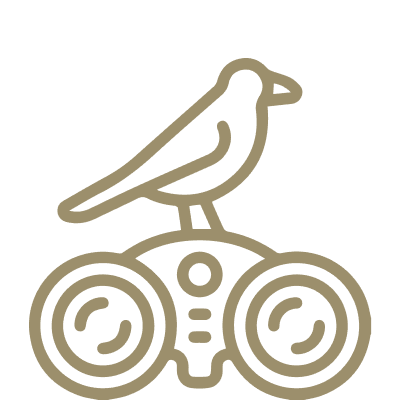
Bird watching

Cultural interactions

Mobile camping

Walking safaris

Wildlife and safari

